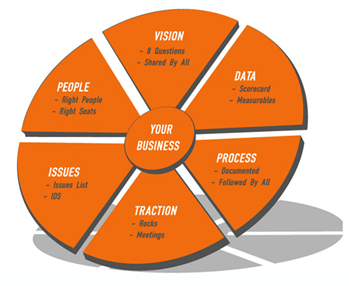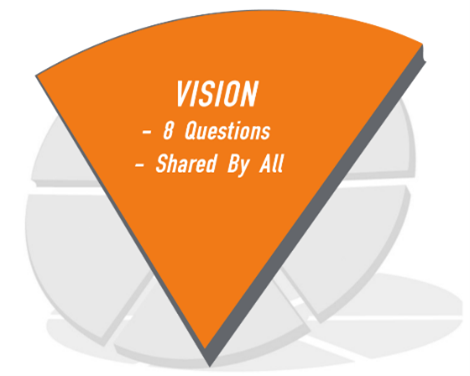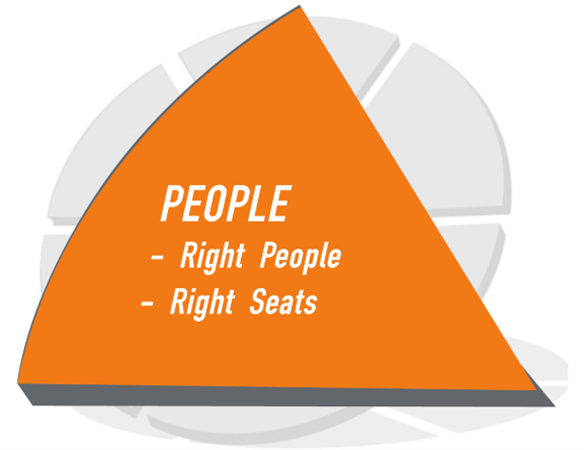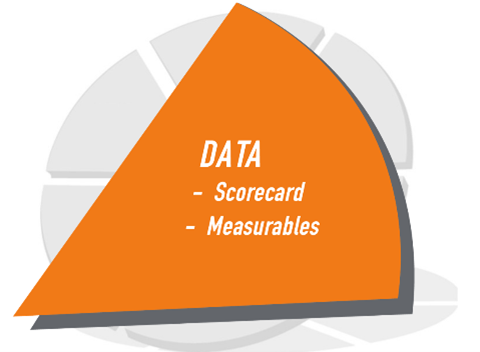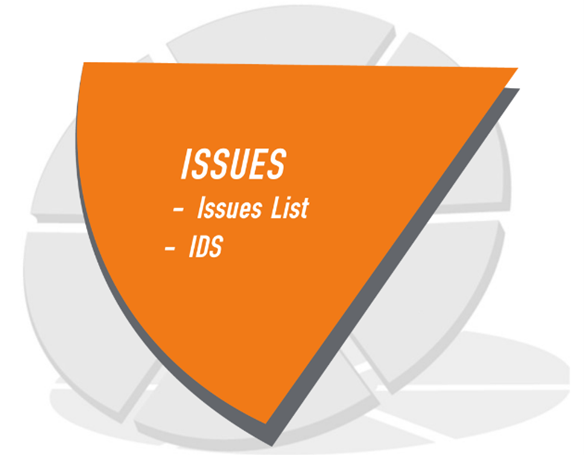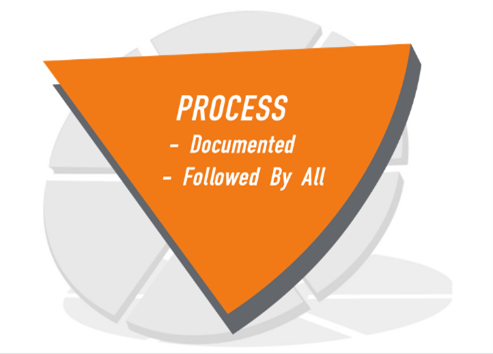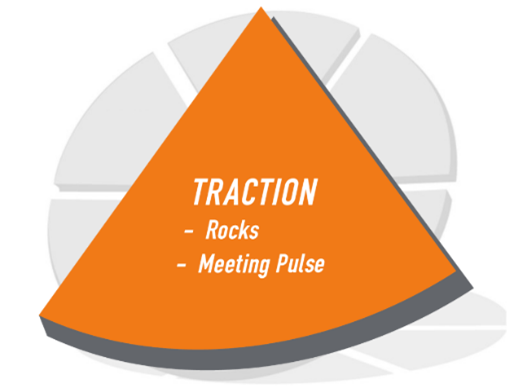Entrepreneurial Operating Systems® (EOS®)
Key Components
How did so many business owners succeed in this current crisis? How did some business owners even thrive during the most challenging year one will hopefully ever experience? Because they stuck to the basics—staying focused. These business owners continually promoted their vision, ensured they had the “right people in the right seats” throughout their organization, used scorecards and measurables to track all critical data, and prioritized and solved all issues that popped up. These business owners stayed true to their core processes and instilled the discipline and accountability (Traction®) necessary to deliver their annual plans and goals. This article discusses the EOS® process; a process that enables businesses to realign their core services and survive economic and financial crisis in times of uncertainty.
When the world seemingly “shut down” in March 2020, my initial concern was for all of my clients. Would their customers continue to buy from them? Would their employees still be able to come to work? Would their cash hold out until things got back to “normal”?
As I contacted them to help them with their issues, I was relieved that most of them simply viewed the COVID-19 related issues as just another issue that they needed to solve for their organization. They all made the necessary adjustments. Nobody scrapped their annual plans that had been set one to two quarters earlier. Fast forward to the end of 2020, and I was pleased to see that most of my clients had a successful year. While this group reported a 2020 revenue decrease of about 2% over 2019, their average profits increased 35% in 2020!
How did so many business owners succeed in this current crisis? How did some business owners even thrive during the most challenging year one will hopefully ever experience? Because they stuck to the basics—staying focused. These business owners continually promoted their vision, ensured they had the “right people in the right seats” throughout their organization, used scorecards and measurables to track all critical data, and prioritized and solved all issues that popped up. These business owners stayed true to their core processes and instilled the discipline and accountability (Traction®) necessary to deliver their annual plans and goals.
This article discusses the EOS process; a process that enables businesses to realign their core services and survive economic and financial crisis in times of uncertainty.
EOS is a process that includes the Six Key Components™ of the Entrepreneurial Operating System® (EOS®) and is intended to enable businesses to survive a crisis like the one we experienced and are emerging from; it has become clear why these are so essential. What follows is a deeper dive into the critical EOS Key Components with the hopes that there will be tips/ideas that all readers will pick-up to help your businesses accomplish all their goals, no matter what future challenges lie ahead of us.
Vision:
Do you know what your organization will look like on 12/31/2021? How about 12/31/2023? How about at the end of 2030? Is your vision clear to you? Is it clear to all of your employees? Just imagine if every employee could vividly see your vision and is rowing just as hard as you are to get there. How easily would your organization run? How confident would you be in achieving the results that are expected? The Vision Key Component clarifies that question for business owners and everyone within the organization. In theory, business owners and the rest of the business leadership team currently all have a vision for the business, but there are likely differences. We need to consolidate your individual visions to develop your organization’s collective vision. Once the business owner(s) have a vision of where the organization is headed, it makes the planning process much easier. There are eight questions that need to be answered and agreed upon by a business leadership team to have a great vision and plan:
What are the business core values?
What is the business’ core focus?
What is the business’ 10-year target?
What is the business’ marketing strategy?
What is the business’ three-year picture?
What is the business’ one-year plan?
What is the business’ 90-day rocks (objectives)?
What are all other issues for your organization?
Now that the business’ vision and plan are written and agreed upon, one needs to make sure that it is shared by everyone in the organization. It will be critical that everyone can see where the business is going and that they want to be a part of that journey. We will talk more about this when we introduce you to the People Key Component.
People:
As Jim Collins and his research team found and explained in Good to Great, successful companies have the “right people” on their proverbial bus and they are all in the “right seats”. Most of us can agree with this concept, but when the labor market is tight, it is tempting to tolerate employees that truly do not share the core values or cannot adequately perform the requirements of the job. Fear of losing an employee and the prospect of having to recruit and train his/her replacement often stops leaders from having the important conversations to lay out their expectations and explain how that employee is not meeting those expectations.
It is estimated that when the business owner or supervisor clearly articulate the expectations and show the difficult employees where they are falling short, 80% of the time those employees will modify their behaviors and actions to meet the expectations. However, 20% will not. In this latter instance, it means that these employees need to leave the company. There is a risk in confronting problem employees, but the odds are clearly in the business owner’s favor when they take action! Also, consider the message that is sent to good employees. If they sense that the business owner will not take action on employees that are bringing them and the business down, these employees will likely be the ones who will leave the company and that is a cost the business cannot afford!
Data:
How do business owners know if they have had a good week, are having a good month, are tracking to the quarter or year? More importantly, how do employees know if they had a good day or week? We are all wired to deliver expectations we understand and agree with. Having a clear and concise Scorecard provides employees and the business owner with a pulse on how they are performing and when they have issues that need to be solved. This is helpful when employees are working in the office, and it is even more helpful when they are working remotely. A great scorecard will efficiently point out the critical issues the organization must address to keep the organization on track to deliver the weekly, monthly, quarterly, and annual results that are expected.
Issues:
Great companies are very good at solving their issues. They do not conceal them or run away from them. They look for and encourage issues because they know that they can solve them. The only issues they cannot solve are the ones they do not know about. During this past year, issues have been coming at us at an alarming pace. The business owner cannot solve them all and some are more impactful than others. It is important to keep them in perspective by prioritizing the ones that must be solved and holding off on the ones that can wait to be solved the following week or quarter. Once the business owner has prioritized the most urgent issues, the business owner needs to drill down to get to the root cause.
Many times, when an issue is brought out, discussed, explained, defended, and commiserated, the process tells stories, but rarely identifies the true root cause of the issue. This is typically what consumes time in meetings and never gets the issue resolved. I.D.S. is the EOS® Issues Solving Track™ that instills the discipline necessary to first identify the root cause. This step will take more time at the front end, but it will ultimately save the business owner time because the team will not get distracted focusing on symptoms and telling stories that may not be relevant to the real issue. Once the root cause is identified, then one moves to discussion. This ensures that everyone’s voice has been heard and guarantees the team is focused on the most probable root cause. Once there is agreement on the most probable root cause, one lists all the possible solutions.
Processes:
Each business has a unique way of doing business. Yet, there are a handful of core processes for each critical area of a business (HR, sales, marketing, operations, services, finance, customer service, etc.). Every business has certain nuances or ways that they perform each of these that are unique to them. These are the so-called “secret sauce” that the business owner never wants to lose. Businesses need to capture and document these at a high level. Recording 20% that delivers 80% of the value. This will ensure that all the employees perform the processes, meets expectations, and that the customers see the company in a consistent manner no matter who is currently in the seat.
Traction:
Discipline and accountability will give a company the traction it needs to survive or thrive in any environment. This is especially essential when navigating challenging and uncertain times. Businesses need to have the discipline to meet regularly with the leadership team, review and analyze the scorecard metrics each week, review past quarter’s performance, and forecasting the next quarter while learning from past successes and mistakes. Accountability comes from helping and holding each team member responsible for their commitments, metrics, and tasks. This will provide the organization the traction necessary to be the best it can be while allowing it to get everything it wants and needs from the business.
Joe Paulsen has first-hand knowledge of the power of the Entrepreneurial Operating System® (EOS®) as he used it to develop his senior management team and successfully execute their company’s strategic management plan. This plan successfully transitioned a declining military sales segment of the business to a growing direct sales channel business which increased from $1.2M annual revenue in 2009 to $13M in 2015. In 2016, he started Pinnacle Business Traction and became a Professional EOS Implementer™ and was certified in 2018.In 2020, Mr. Paulsen joined the EOS Speaker’s Bureau as a Certified Speaker. He has since helped over 40 companies implement EOS® and continues to pursue his lifelong passion for helping entrepreneurs and their leadership teams become more focused, accountable, and healthy.
Mr. Paulsen can be contacted at (507) 382-9610 or by e-mail to joe@pbtraction.com.


